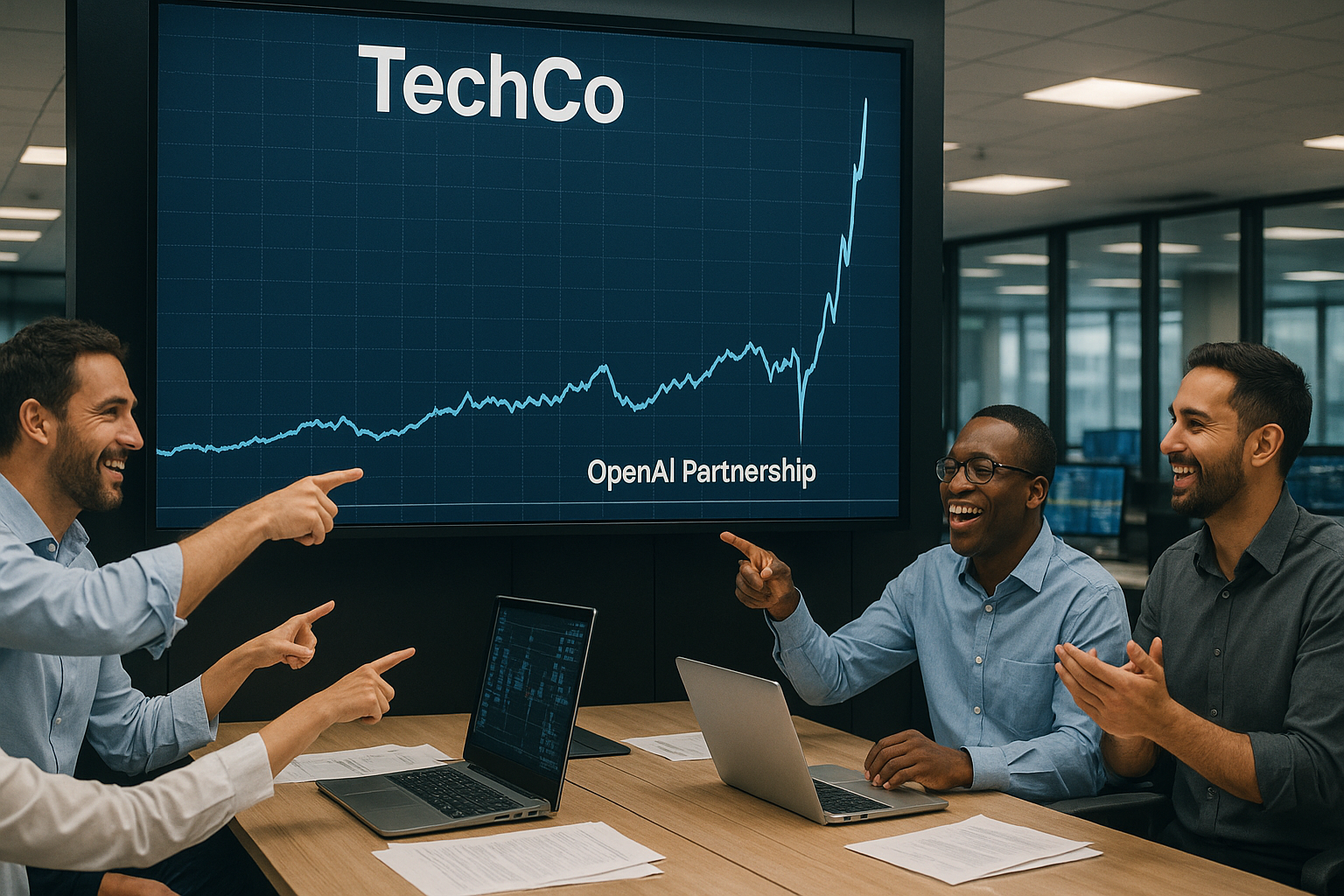Here we go again.
The moment OpenAI announced its newest corporate partnership last week, Wall Street's algorithms practically tripped over themselves rushing to place buy orders. A fairly unremarkable tech stock shot up 27% — just like that — all because it'll be providing some vaguely worded "infrastructure support" for OpenAI's next generation of AI models.
I've been covering tech investments since before the pandemic, and this playbook has become so predictable it's almost yawn-inducing. OpenAI points its finger at a company, and suddenly that company's stock chart looks like a hockey stick. It's the seventh time in the past year we've watched this exact drama unfold.
The pattern is dead simple: Company announces OpenAI partnership. Stock goes vertical. Executives suddenly can't stop talking about "our AI strategy" on earnings calls. Rinse, repeat.
But here's what I find fascinating — why does the market keep responding with such Pavlovian enthusiasm when everyone can see the pattern? Several explanations make sense.
First, there's what I think of as the "halo effect lottery." Getting picked by OpenAI is like receiving a golden ticket that signals two things at once: your company has something genuinely valuable to offer the AI darling, and you've just been admitted to a pretty exclusive club. The stock jump represents both the tangible business opportunity and the speculative potential of joining the AI inner circle.
Take Databricks after their OpenAI announcement back in March. Sure, the stock jumped 19% right away (predictable), but what's more interesting? It maintained a 32% premium even three months later when actual revenue impacts were still... theoretical, at best. The market wasn't just pricing in the partnership itself — it was betting on future partnerships, talent attraction, and the subtle validation of the company's tech capabilities.
Then there's the "narrative arbitrage" angle. Wall Street has made up its mind — AI is the next big paradigm shift, period. For fund managers, being underweight on AI exposure is a much bigger career risk than being overweight. When OpenAI (the ChatGPT folks who kicked off this whole AI frenzy) essentially points at another company and says "these people are part of our future," it creates an instant shortcut for investors.
Instead of doing the hard work of analyzing technical merits (which, let's be honest, most financial analysts couldn't do properly anyway), they can just follow OpenAI's implicit endorsement. It's investment by association.
But the executives at these partner companies? They're not naive. They get this dynamic perfectly well.
"We frontloaded the announcement details with the technical elements that would excite investors, even though the revenue impact is backloaded to years two and three," admitted one CFO at an OpenAI partner company when I spoke with him off the record. "It's not dishonest—we're genuinely building together—but we certainly understood how the market would read it."
Many of these deals involve minimum commitment levels that sound impressive in press releases but are essentially rounding errors on quarterly financials. The real prize? That stock pop and the narrative reset it provides.
So is any of this rational? Are investors correctly valuing these partnerships, or are we watching a momentum-driven feeding frenzy with little connection to fundamentals?
The evidence... is complicated. Of the previous six companies with OpenAI partnerships, four are still trading above their pre-announcement levels even after the initial excitement faded. But two crashed back to earth within months when those promised AI synergies failed to materialize in actual earnings reports.
Looking closer at the success stories reveals a pattern. They all had meaningful AI capabilities before the OpenAI partnership, rather than just trying to hitch a ride on the AI bandwagon.
The market isn't totally inefficient here — it's operating with imperfect information in a domain where future value is genuinely uncertain. When nobody can confidently model the revenue impact of being in OpenAI's orbit, narrative fills the void.
As for this latest partnership? I'd suggest watching not the immediate price action, but how management discusses concrete metrics over the next two quarters. The companies that maintained their gains didn't just announce partnerships — they demonstrated how those partnerships translated into actual customer behaviors, product adoption, or efficiency improvements.
In the meantime, I've started keeping a running list of tech companies that haven't yet announced OpenAI partnerships. If the pattern holds, that's where the real opportunity might be hiding — getting positioned before the almost inevitable announcement bump.
After all, in a gold rush, sometimes the smartest strategy isn't following the crowd to the latest strike, but figuring out where they'll rush next.
